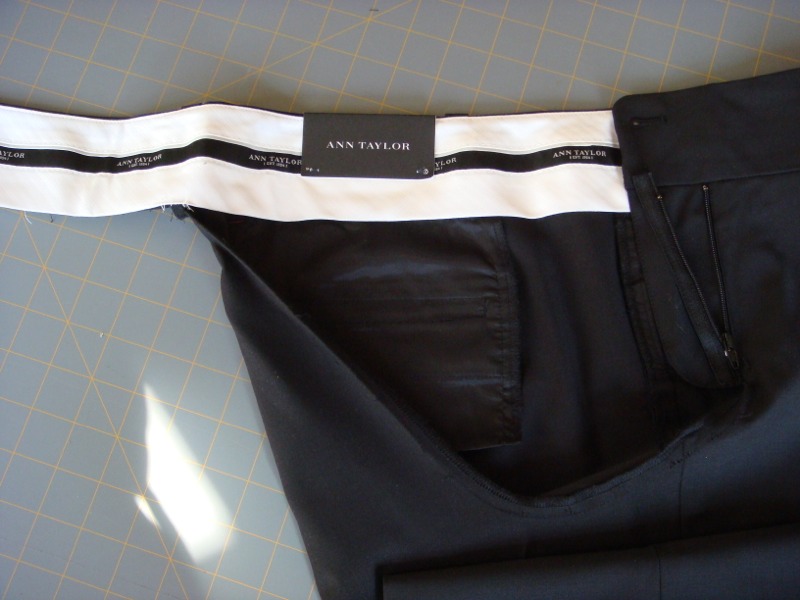
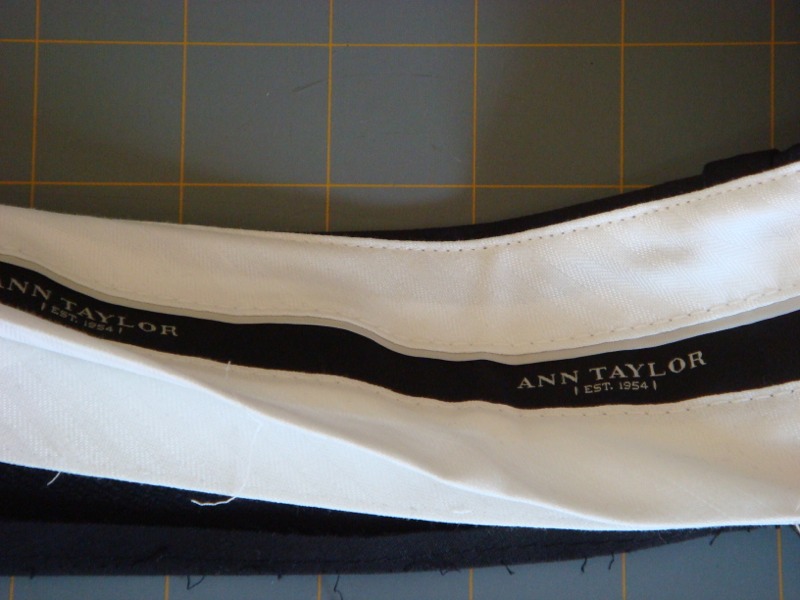 A close inspection of the waistband reveals several layers. The outermost layer is the fashion fabric. There is a center back seam. The fashion fabric is cut in a contoured shape with the lengthwise grain running parallel to the floor at the center front and the center back is on the bias. The waistband looks like tie interfacing. It is behind the facing layers. The facing has a bias cut woven section at the top with piping and stable ribbon in the center and a pleated woven bias section which hangs free in front of another woven piece on the bias at the bottom edge.
A close inspection of the waistband reveals several layers. The outermost layer is the fashion fabric. There is a center back seam. The fashion fabric is cut in a contoured shape with the lengthwise grain running parallel to the floor at the center front and the center back is on the bias. The waistband looks like tie interfacing. It is behind the facing layers. The facing has a bias cut woven section at the top with piping and stable ribbon in the center and a pleated woven bias section which hangs free in front of another woven piece on the bias at the bottom edge. 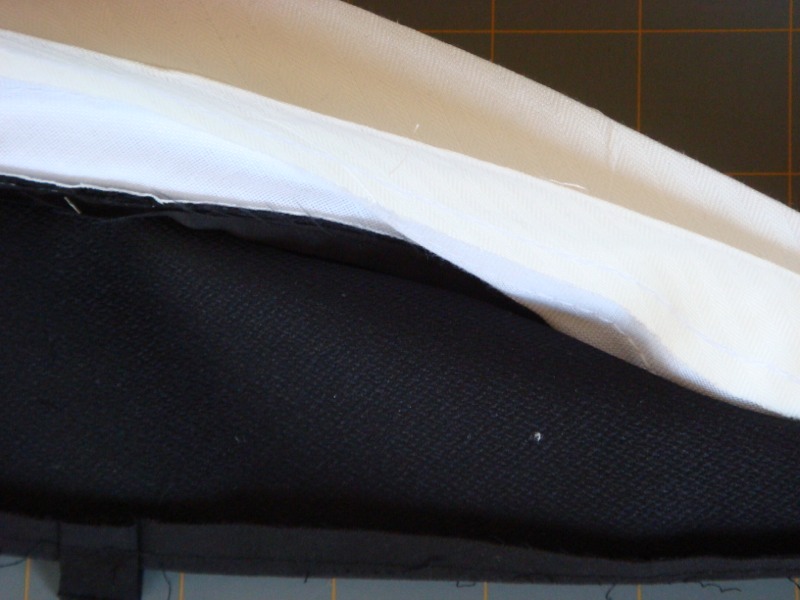
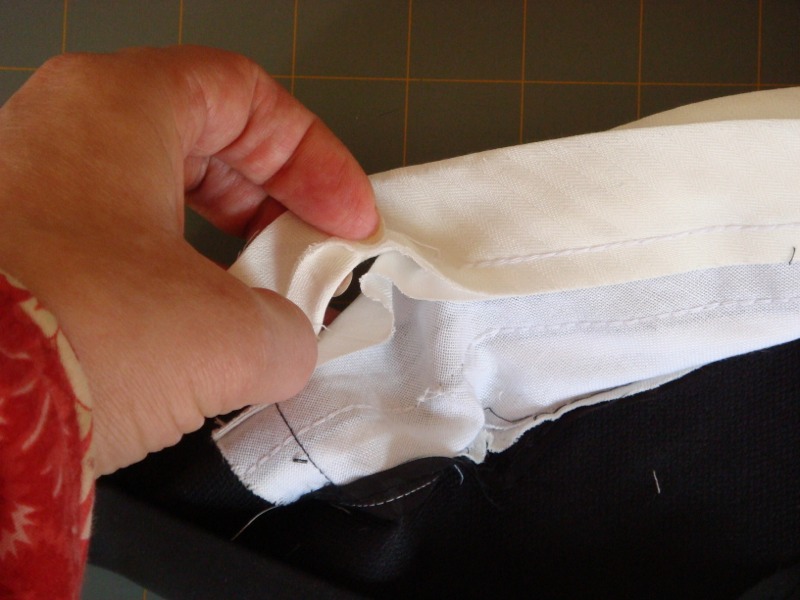 What is the purpose of the free hanging pleat? I think I might eliminate that from my copy. I also will eliminate the belt loops and maybe even the pockets as well. That should make the assembly less complicated. So the order of operations will be:
What is the purpose of the free hanging pleat? I think I might eliminate that from my copy. I also will eliminate the belt loops and maybe even the pockets as well. That should make the assembly less complicated. So the order of operations will be:- cut all pattern pieces
- overcast all edges
- apply interfacing to fly pieces and waistband pieces
- stitch darts in back pieces
- sew pant legs together along inseam and outseams
- sew crotch seam from center back to just below zipper in front
- make fly front zipper assembly
- insert zipper assembly
- make waistband interfacing and facing assembly
- sew interfaced fashion fabric waistband pieces together at center back
- attach fashion fabric waistband to top of pants
- try on and adjust fit of waistband at center back
- mark locations for hooks and eyes and inside button on waistband
- attach waistband interfacing and facing assembly to top edge of waistband
- fasten hooks and button on facing side of front waistband extension
- sew eyes on underlapped side of waistband
- fold waistband to inside of pants
- sew free edge of waistband facing to inside by stitching in the ditch from right side
- sew buttonhole on underlapped side of waistband
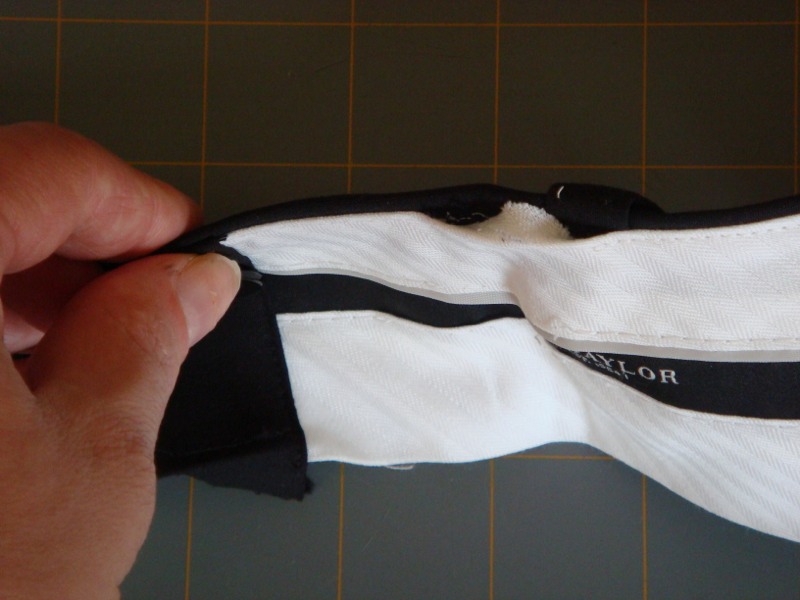
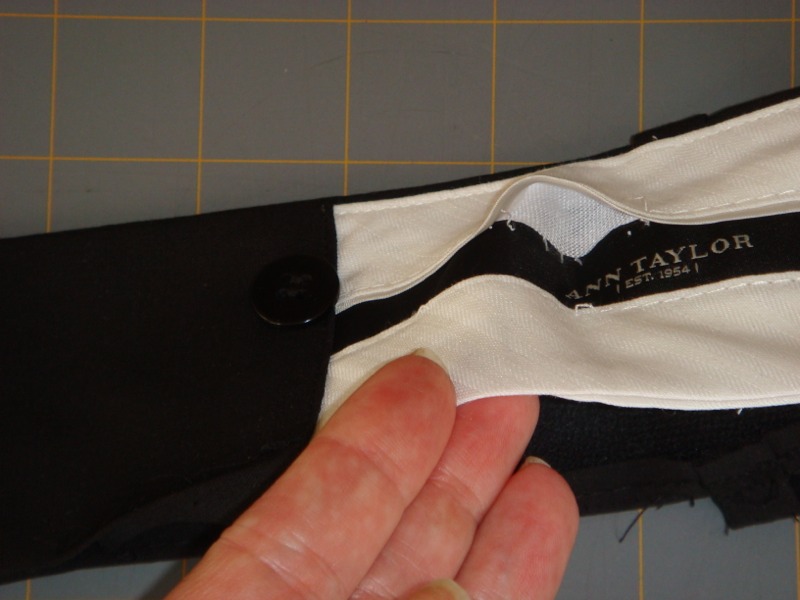
Peggy Sagers gave me a nice printed sheet of instructions for the zipper assembly which I have used ever since. I am wondering if there is a tutorial available for the waistband and facing assembly available anywhere. Does anyone know of a good visual reference for this? Maybe David Coffin? What material is the facing made of? Is it a shirting? Cotton? Polyester to prevent shrinking? How do you make your waistbands?
Deb
ReplyDeleteI'm not into copying all RTW details so my process may not agree with yours at all. I do like the two piece waistband, the center back seam. It really helps during alterations and I've found that every single garment needs fit tweaks. Having that center back seam is a life saver. Beyond that I interface both sides of the waistband. Sometimes I use a single piece folded and other times I use a waistband and a facing. Either way the entire thing is interfaced. I've pretty much settled upon tricot knit fusible, but that's because the range of fabrics I usually sew with work well with the knit fusible.
I was interested in your disection and hope that someone with more knowledge than me explains what you saw. I can't help but think the manufacturer's aren't paying extra to create the waistband in layers if it didn't create some desired result when it reaches the wearer.
Thanks for the photos. I love to see how garments are put together, especially when it gives such a nice finish. David Coffin has a book about pant construction. I don't have a copy but I wonder if he covers this type of waistband construction in it? I look forward to your follow up posts on this.
ReplyDelete